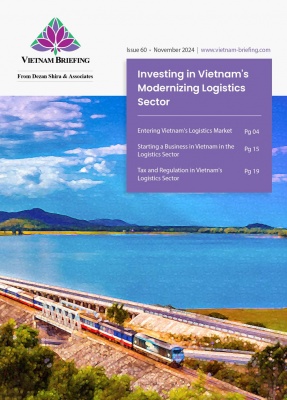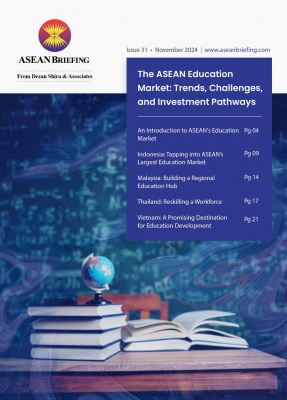Impact of Typhoon Yagi on Vietnam: Economic Damage and Recovery Efforts
The full extent of Typhoon Yagi’s damages in Vietnam is still being assessed, with several key sectors severely impacted. To expedite economic recovery, the government has instructed relevant ministries and agencies to develop comprehensive recovery plans.
General losses from Typhoon Yagi
As of September 17, official reports indicate that Typhoon Yagi, along with subsequent flooding and landslides, has left 329 people dead or missing and injured 1,929 others. The typhoon has caused extensive damage in Northern Vietnam, amounting to VND 40 trillion (approx. US$1.63 billion), prompting the government to anticipate a 0.15 percentage point reduction in the country’s 2024 GDP growth from earlier forecasts.
Mitsubishi UFJ Financial Group (MUFG), one of Japan’s largest banking institutions, projects a more significant slowdown, estimating a 0.2-0.5 percentage point reduction in GDP growth this year.
According to the Minister of Planning and Investment, Typhoon Yagi—Vietnam’s strongest in 30 years—has affected 26 localities, accounting for 41 percent of the nation’s GDP and 40 percent of its population.
MUFG noted that Yagi hit the Red River Delta, home to key economic hubs such as Hanoi and Hai Phong, as well as the provinces of Quang Ninh, Bac Ninh, Bac Giang, and Thai Nguyen. These areas collectively contribute 38 percent of Vietnam’s GDP and 55 percent of its export revenue.
Hai Phong and Quang Ninh provinces, directly impacted by the typhoon, have reported losses of over VND 10.8 trillion (US$440 million) and VND 23.77 trillion (US$960 million), respectively. The disaster also destroyed 257,000 houses, 1,300 schools, 305 dikes, and numerous other infrastructure.
Sectoral damages caused by Yagi
Early assessments from CEL, a consulting firm specializing in supply chain solutions, indicate that 15.4 percent of companies experienced severe disruptions due to Typhoon Yagi, while 53.6 percent faced manageable delays. Only 6.2 percent reported no impact. CEL surveyed 216 companies across manufacturing (38.7 percent), retail and distribution (15.1 percent), and supply chain and logistics (26.9 percent), with 60 percent of respondents having over a quarter of their operations based in Northern Vietnam.
The supply chain and logistics sector was hardest hit, with 82.4 percent of businesses reporting severe or moderate impacts. Transportation was particularly affected, with more than half of companies in manufacturing, retail, and distribution reporting disruptions. Warehousing and inventory were the second most affected areas, impacting 24.2 percent of businesses overall.
Supply chain disruptions
CEL highlighted the following common damages caused by Typhoon Yagi:
- Flooding: Approximately 50-60 percent of factories experienced flooding during severe typhoons.
- Roof damage: Around 30-40 percent of industrial facilities suffered roof damage, particularly in high-wind regions.
- Structural collapse: Partial or complete building collapse affected 10-15 percent of factories, depending on construction quality and storm intensity.
- Power outages: Around 80-90 percent of businesses faced power and communication disruptions.
- Damaged inventory: Roughly 20-30 percent of companies experienced inventory damage, especially in sectors like electronics and wood products.
- Road erosion: Erosion disrupted logistics and transportation for 20-30 percent of businesses.
Examples of Typhoon Yagi’s damage to businesses in Northern Vietnam
|
Company |
Province |
Impact |
|
Samsung Industrial Vietnam |
Bac Ninh |
A factory to manufacture and assemble automotive parts has been flooded. |
|
LG Electronics |
Hai Phong |
Warehouse flooded, affecting refrigerators and washing machines. |
|
Wayne |
Hai Phong |
6,000 m2 facility lost its roof, with significant damage to machinery, goods,… |
|
Daito Rubber |
Hai Phong |
Factory flooded, roof lost, and machinery damaged. |
|
Vina Bingo |
Hai Phong |
Three factories suffered roof damage, resulting in damaged goods. |
|
Iwahashi Brushes |
Hai Phong |
4,000 m2 factory collapsed, with damage value of 18 billion VND (~732,602 USD). |
|
Gia Nghia |
Hai Phong |
Complete collapse of a 5,000 m2 facility, damaging machinery and equipment. |
|
Vinh An |
Hai Phong |
Roof of a 4,000 m2 facility blown off, all wooden goods soaked. |
|
Vang Danh Mine |
Quang Ninh |
Complete loss of power and communication, road from Uong Bi to the mine eroded. |
Source: CEL
Logistics
According to CEL’s report, 72.73 percent of companies experiencing severe supply chain and logistics disruptions are port operators, third-party logistics (3PL) providers, last-mile delivery companies, and cold chain service companies. Of these severely affected companies, 85.8 percent operate facilities in Northern Vietnam, particularly in Hanoi and Hai Phong. While the 3PL providers operate nationwide, the concentrated impact in the North has amplified disruptions in these key logistics hubs.
Rail
Việt Nam Railway Corporation (VNR) has reported that the sector heavily suffered from the typhoon and its aftermaths, with total damages reported up to US$7.3 million:
- The damage to state-invested rail infrastructure assets is estimated at around US$5.4 million, including more than 30 locations where landslides buried railway tracks.
- Over 40 spots were flooded or had roadbeds, and ballast washed away.
- Hundreds of trees or architectural structures fell onto tracks or cut signal communication lines.
VNR alone suffered losses of US$1.93 million, with US$828,000 attributed to company-invested assets, including:
- 17 locomotives and numerous pieces of equipment submerged in water;
- Several supply depots, track maintenance stations, accommodation units, and office buildings having their roofs blown off or boundary walls collapsing; and
- Revenue loss from railway transport amounted to US$1.1 million due to the cancellation of more than 22 freight trains and over 54 passenger trains.
Agriculture
The agriculture sector has suffered the most from the recent natural disaster:
- 262,000 hectares of rice, crops, and fruit trees were damaged or destroyed.
- 2,250 aquaculture farms were swept away.
- Nearly 2.3 million livestock and poultry died, approximately 0.42-0.46% of the total poultry population in the country
- Close to 310,000 urban trees were uprooted.
The cost of groceries has skyrocketed with the loss of vast amounts of crops and livestock. While supermarkets in the north committed to maintaining price stability during and after the typhoon, wet markets experienced price increases from 10 to 100 percent due to short supply and transportation challenges post-Yagi, with signs of stabilization starting September 12.
Tourism
More than 20 tourist boats in Ha Long Bay, Quang Ninh province, were sunk during Typhoon Yagi’s attack, inflicting losses on hotels and tourism businesses. A spokesperson for Tuan Chau International Passenger Port in Quang Ninh province said the exact losses are yet to be determined due to telecom and power disruptions. Tuan Chau Port, one of the areas hardest hit by the typhoon, covers an area of over 1.7 million square meters with the capability to berth more than 2,000 ships. It is one of three ports that receive tourists visiting Ha Long Bay.
Meanwhile, several travel companies with tours scheduled in the north this week face possible disruptions due to the extensive damage.
Vietnam’s government ramps up recovery plan
With the total damage caused by powerful Typhoon Yagi estimated to exceed VND50 trillion (US$2 billion) across the country, the Vietnamese government has issued a resolution outlining six measures to accelerate recovery:
- Ensuring the safety and well-being of the population in affected areas;
- Rebuilding community life to help people return to a sense of normalcy;
- Revitalizing economic activities;
- Enhancing preparedness for future natural disasters, such as floods and landslides;
- Simplifying administrative procedures to expedite the delivery of relief and support for those in need; and
- Keeping inflation in check and promoting economic growth.
Meanwhile, the government has directed all relevant ministries, agencies, and local authorities to promptly and transparently implement recovery measures, including:
- Disbursing emergency support to vulnerable groups;
- Allocating funds from the state budget to repair homes, public infrastructure, schools, and hospitals, focusing on reopening these facilities as quickly as possible; and
- Reducing or waiving tuition fees for students affected by the typhoon during the 2024-25 academic year.
The government has instructed the Ministry of Public Security to take action against fraudulent groups on social media posing as relief organizations. Ministers and local officials are urged to swiftly address challenges, prevent waste and misuse of funds, and report to higher levels to resolve any issues beyond their authority.
Vietnam receives US$22 million global aid to recover from Typhoon Yagi
As of September 16, 20 countries and international organizations have pledged over US$22 million in aid for Vietnam’s recovery afthe Typhoon Yagi, including funding, shelter supplies, clean water, sanitation resources, and other helps address the impacts of the typhoon.
In addition, overseas Vietnamese have express there solidarity with their homeland. The Vietnam Fatherland Front reported donations exceeding VND600 million (US$24,400) from the overseas community. Vietnamese communities abroad have raised approximately VND19 billion (US$771,600) to support those affected by the storm.
Conclusion
With further damages expected in the future, Vietnam heads toward the recovery stage after Typhoon Yagi, providing remedies for both human and economic losses. The focus will be on how Vietnam implements its action plans to minimize losses and ensure sustainable recoveries across sectors.
About Us
Vietnam Briefing is published by Asia Briefing, a subsidiary of Dezan Shira & Associates. We produce material for foreign investors throughout Asia, including ASEAN, China, and India. For editorial matters, contact us here and for a complimentary subscription to our products, please click here. For assistance with investments into Vietnam, please contact us at vietnam@dezshira.com or visit us at www.dezshira.com.
Dezan Shira & Associates assists foreign investors throughout Asia from offices across the world, including in Hanoi, Ho Chi Minh City, and Da Nang. We also maintain offices or have alliance partners assisting foreign investors in China, Hong Kong SAR, Dubai (UAE), Indonesia, Singapore, Philippines, Malaysia, Thailand, Bangladesh, Italy, Germany, the United States, and Australia.
- Previous Article Vietnam’s Import-Export Regime: Managing Customs and Accessing Tax Benefits
- Next Article Managing Your Vietnam Business Recovery in the Aftermath of Typhoon Yagi































